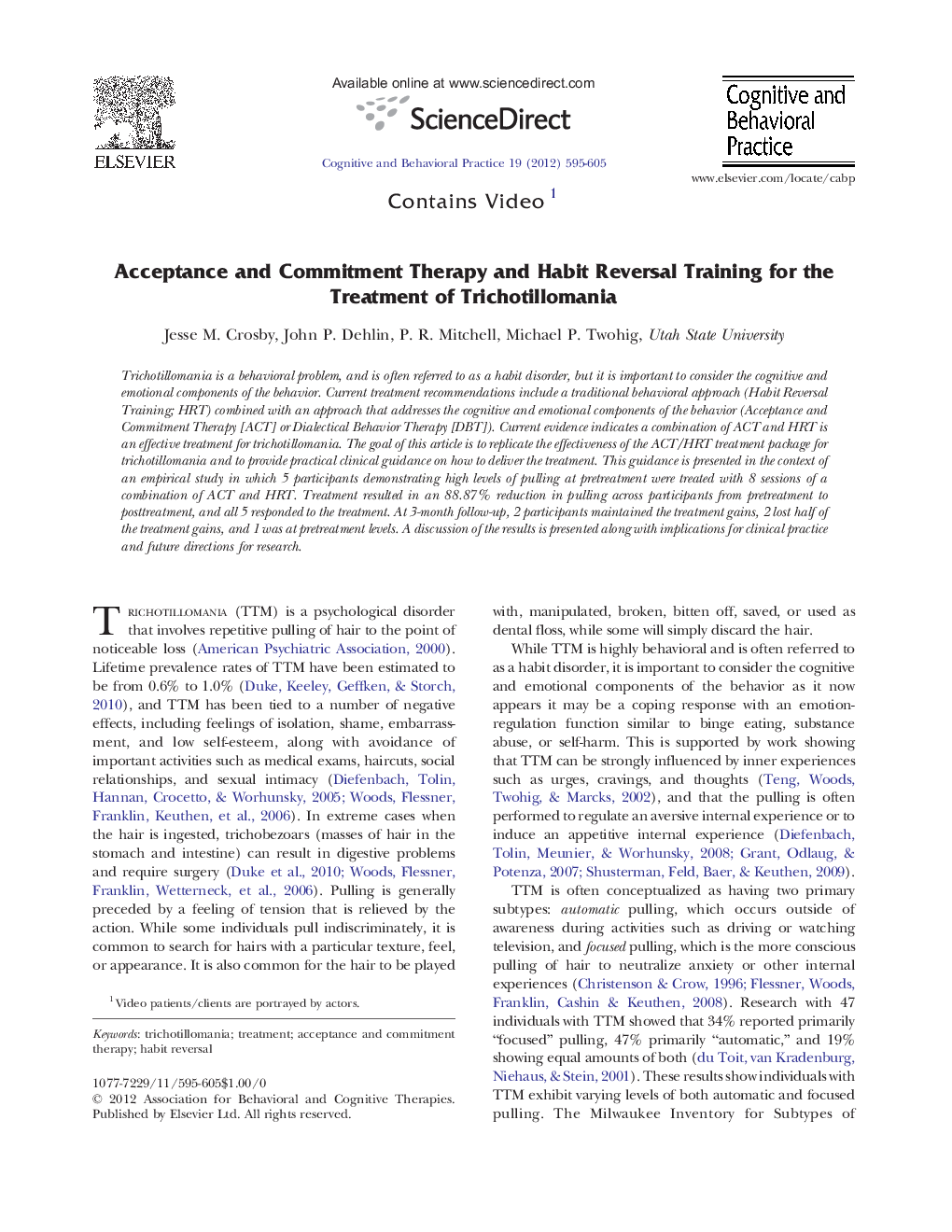| کد مقاله | کد نشریه | سال انتشار | مقاله انگلیسی | نسخه تمام متن |
|---|---|---|---|---|
| 904404 | 916827 | 2012 | 11 صفحه PDF | دانلود رایگان |

Trichotillomania is a behavioral problem, and is often referred to as a habit disorder, but it is important to consider the cognitive and emotional components of the behavior. Current treatment recommendations include a traditional behavioral approach (Habit Reversal Training; HRT) combined with an approach that addresses the cognitive and emotional components of the behavior (Acceptance and Commitment Therapy [ACT] or Dialectical Behavior Therapy [DBT]). Current evidence indicates a combination of ACT and HRT is an effective treatment for trichotillomania. The goal of this article is to replicate the effectiveness of the ACT/HRT treatment package for trichotillomania and to provide practical clinical guidance on how to deliver the treatment. This guidance is presented in the context of an empirical study in which 5 participants demonstrating high levels of pulling at pretreatment were treated with 8 sessions of a combination of ACT and HRT. Treatment resulted in an 88.87% reduction in pulling across participants from pretreatment to posttreatment, and all 5 responded to the treatment. At 3-month follow-up, 2 participants maintained the treatment gains, 2 lost half of the treatment gains, and 1 was at pretreatment levels. A discussion of the results is presented along with implications for clinical practice and future directions for research.
► Replication of the effectiveness of the ACT/HRT treatment for trichotillomania.
► Detailed guidance for clinicians on treatment delivery.
► 87% reduction in hair pulling with moderate maintenance at follow-up.
Journal: Cognitive and Behavioral Practice - Volume 19, Issue 4, November 2012, Pages 595–605